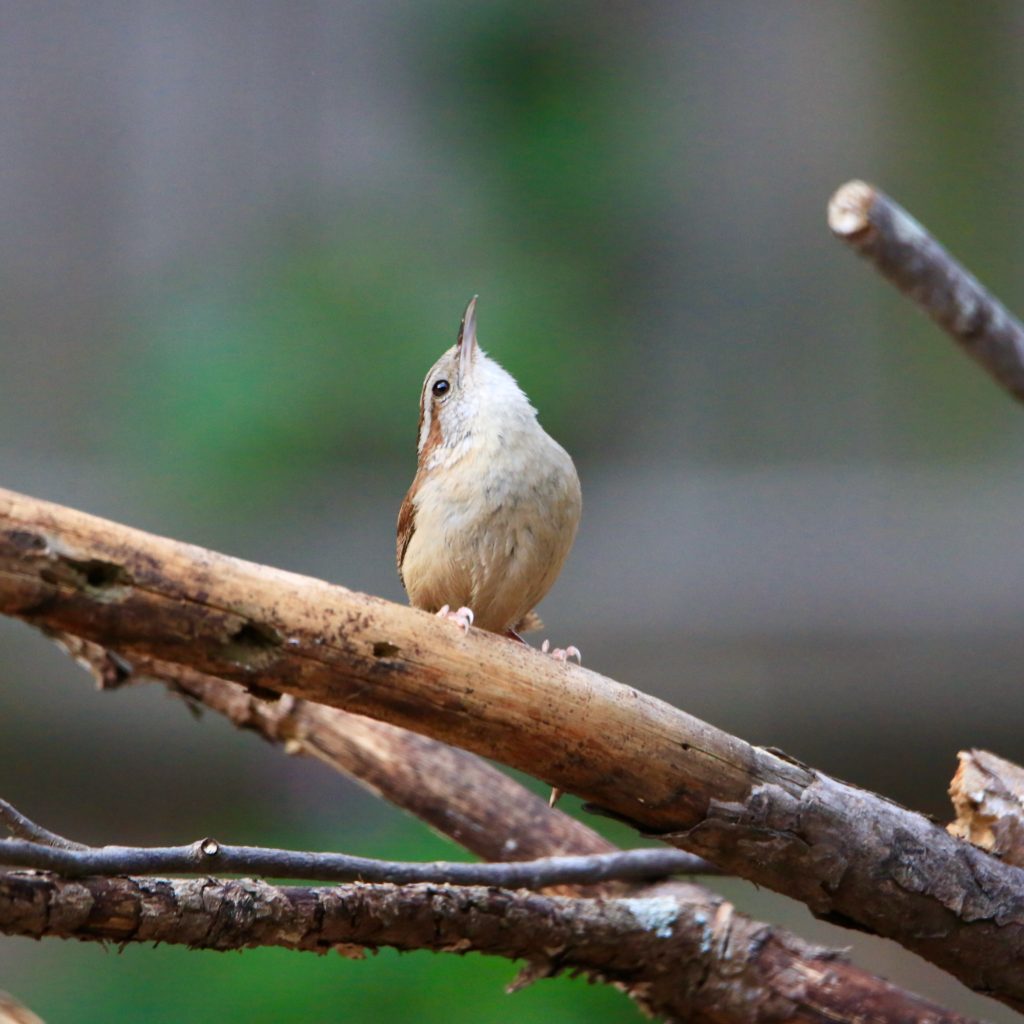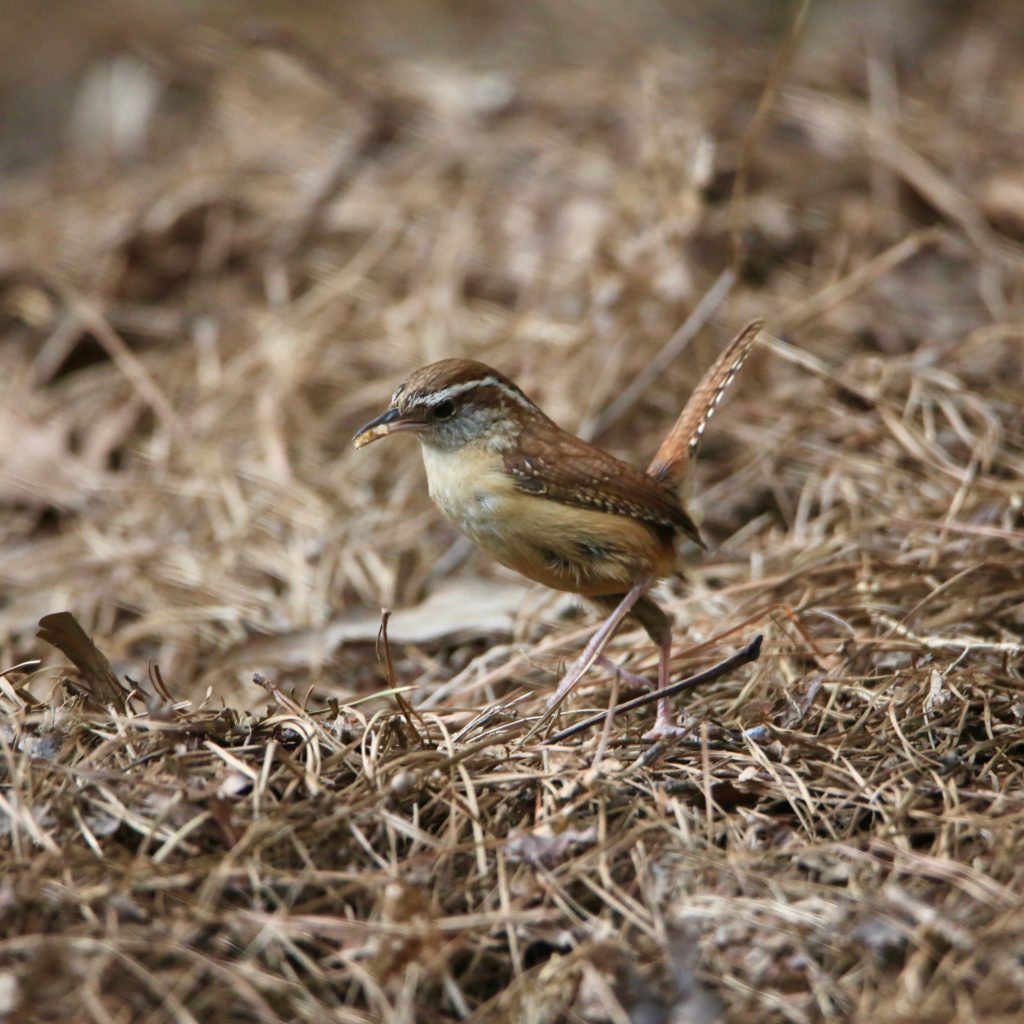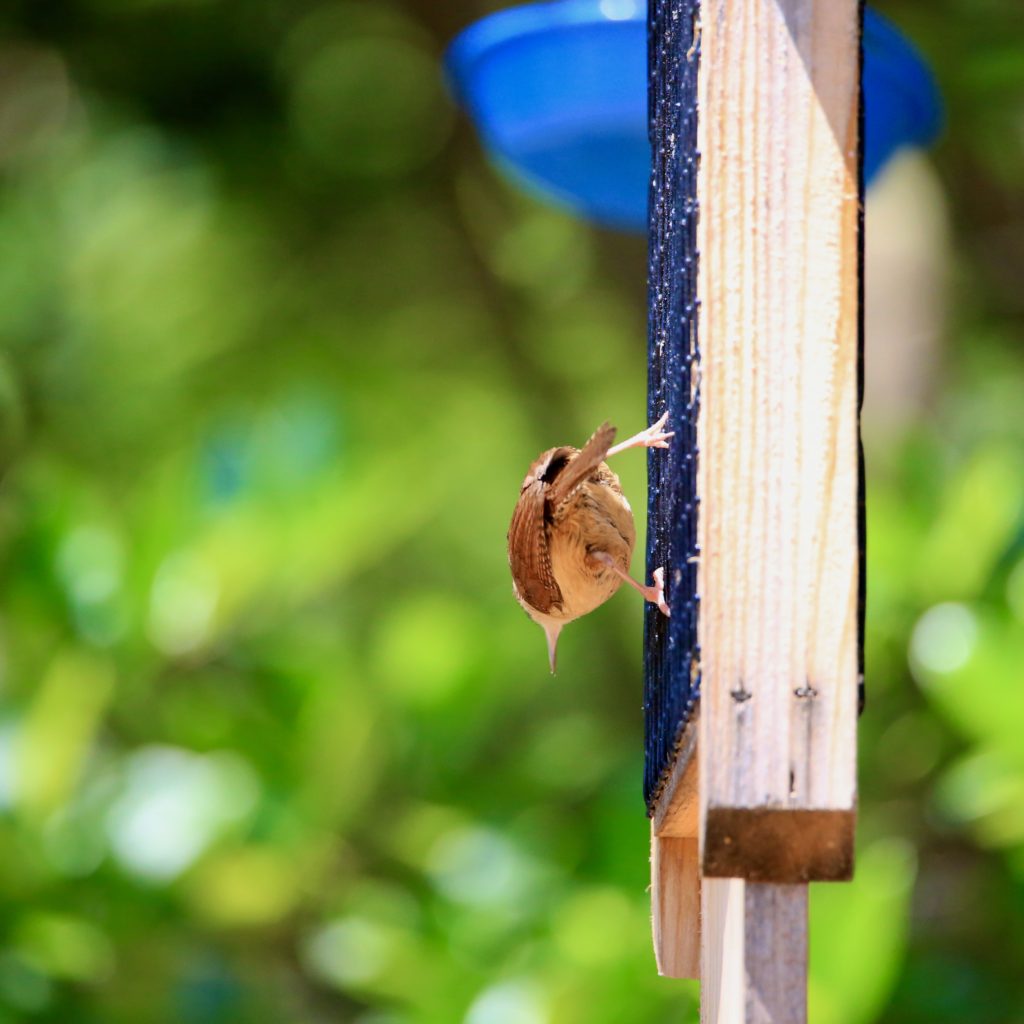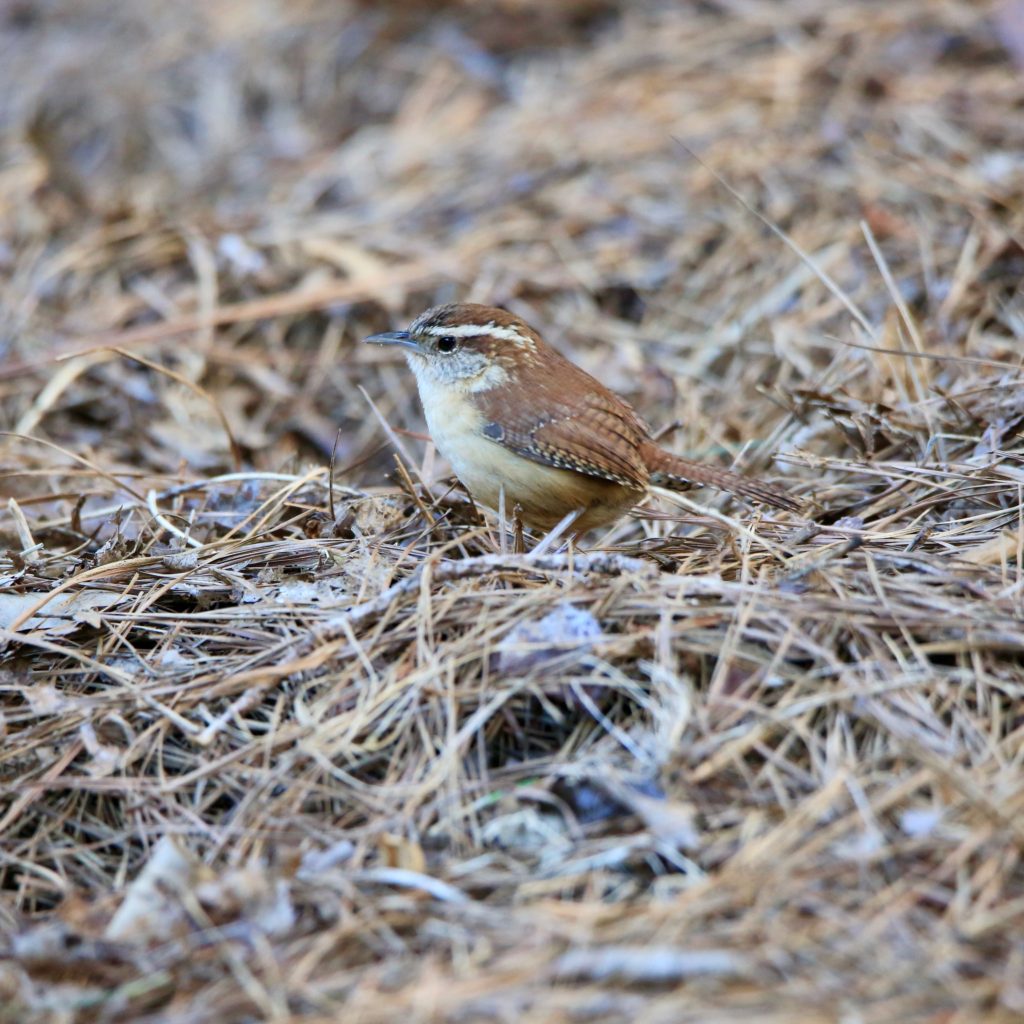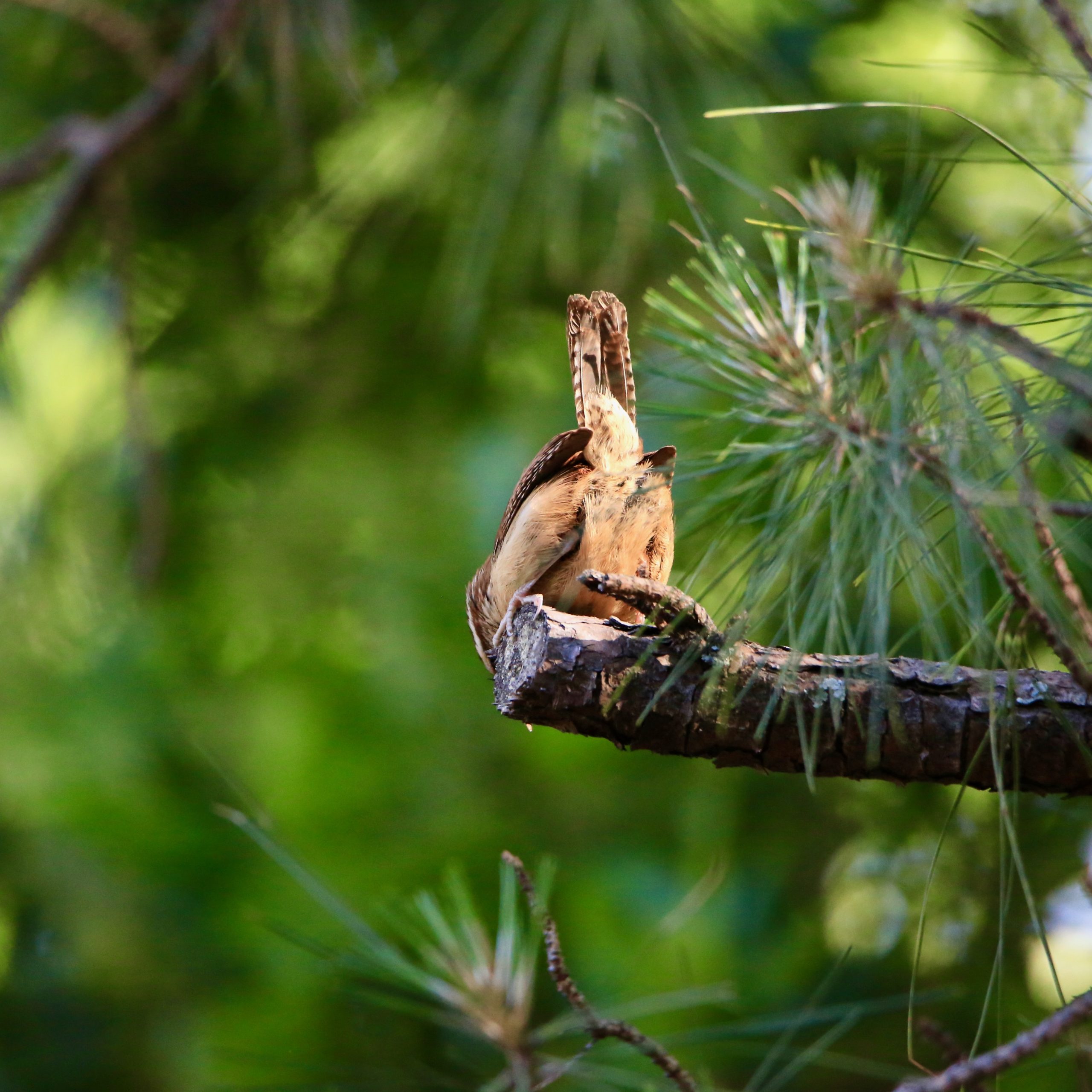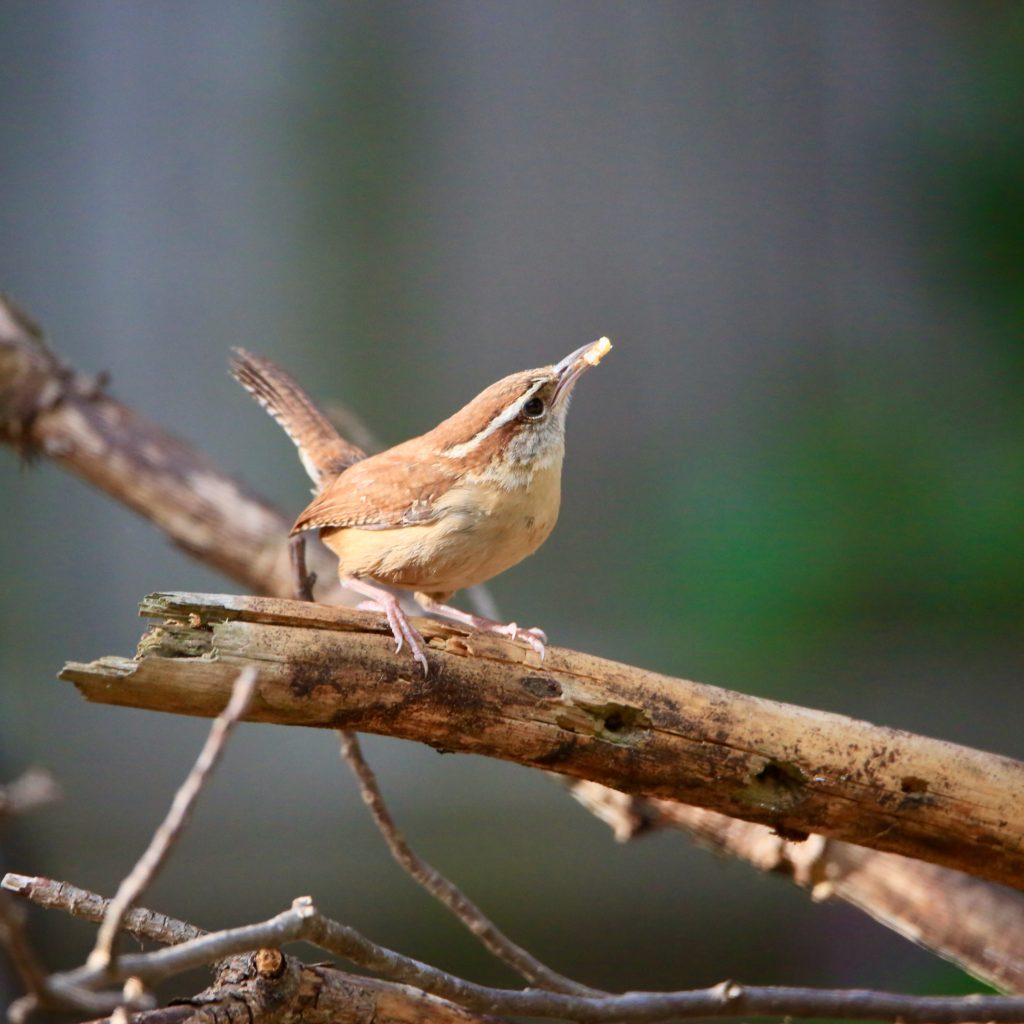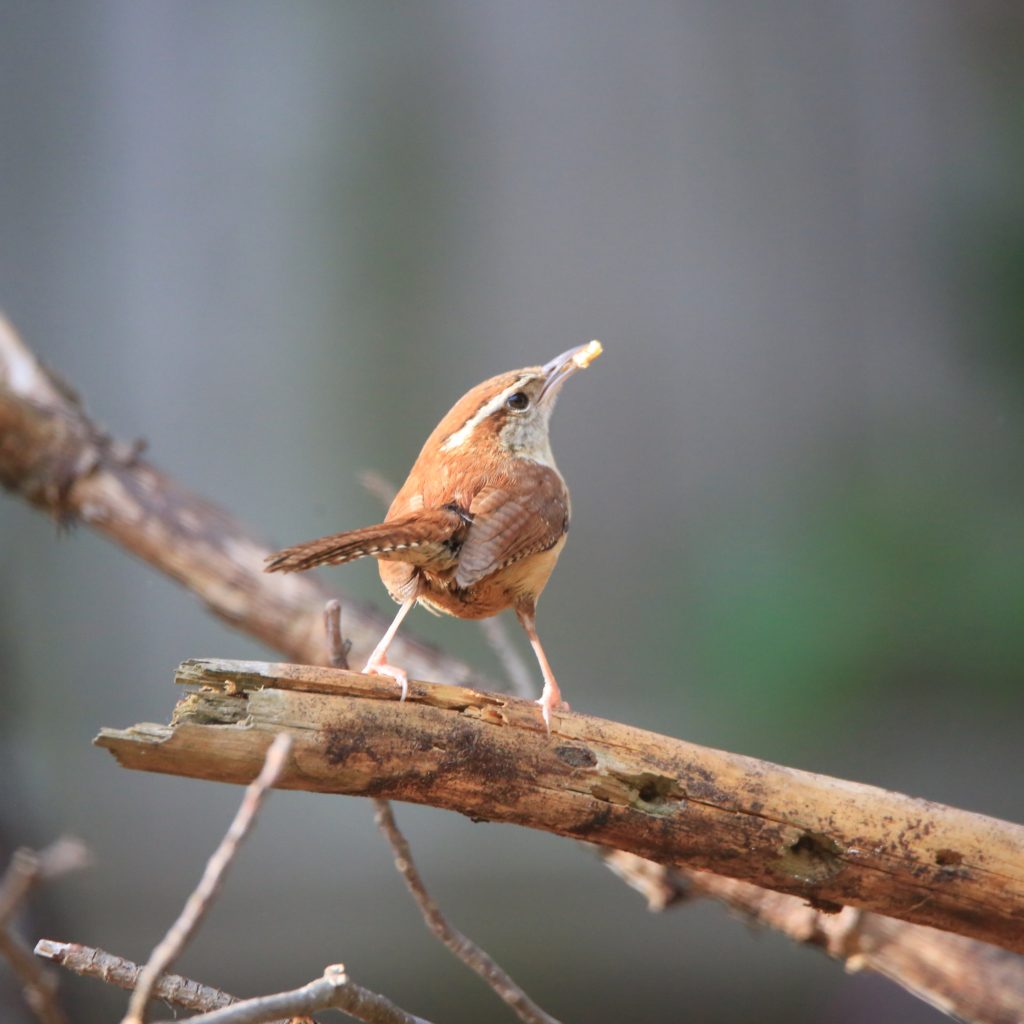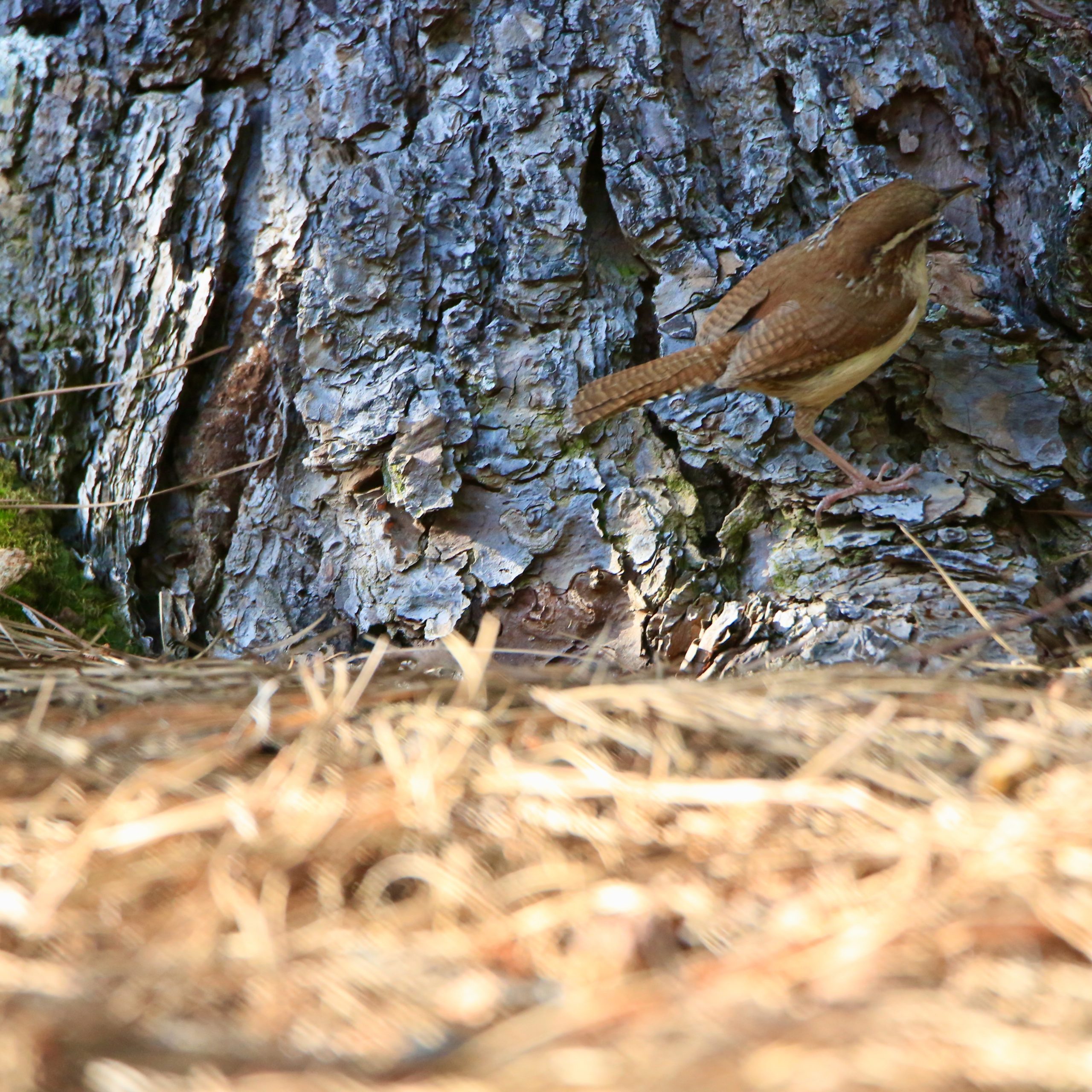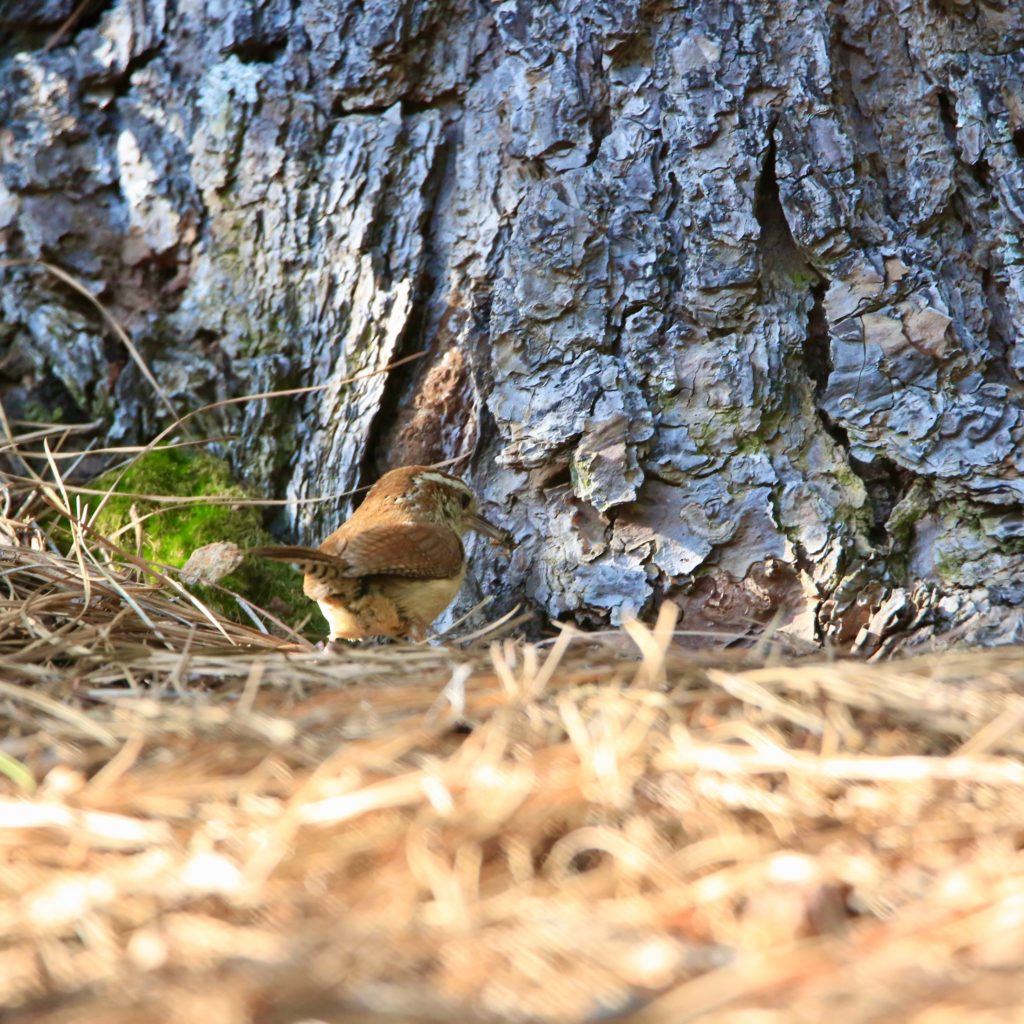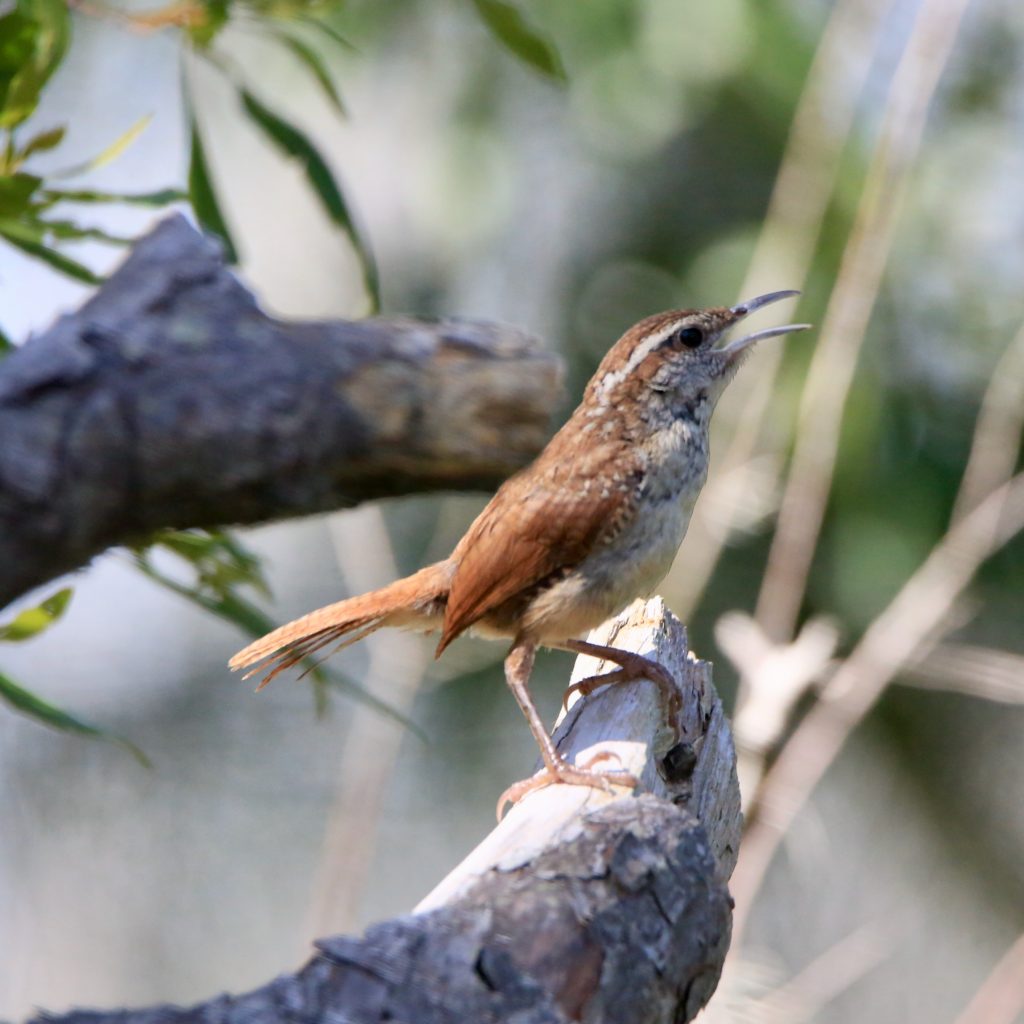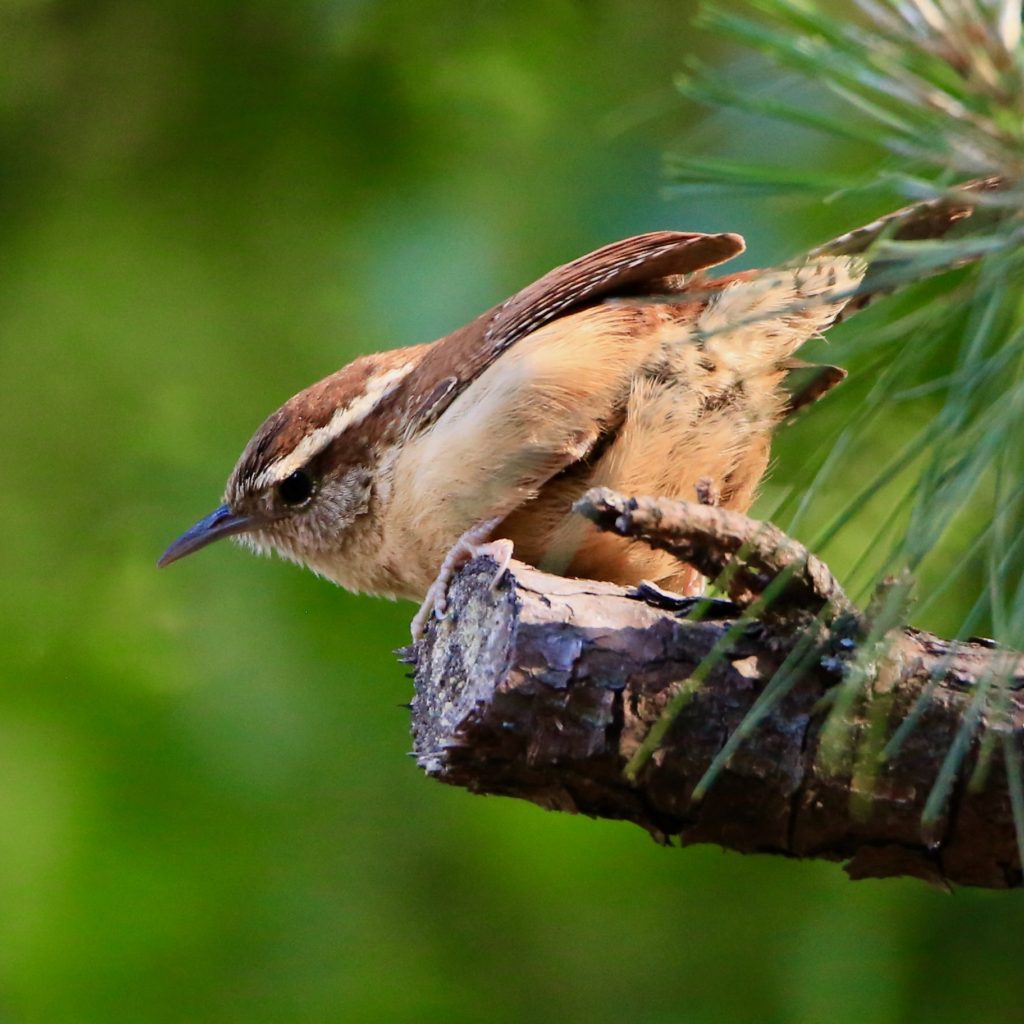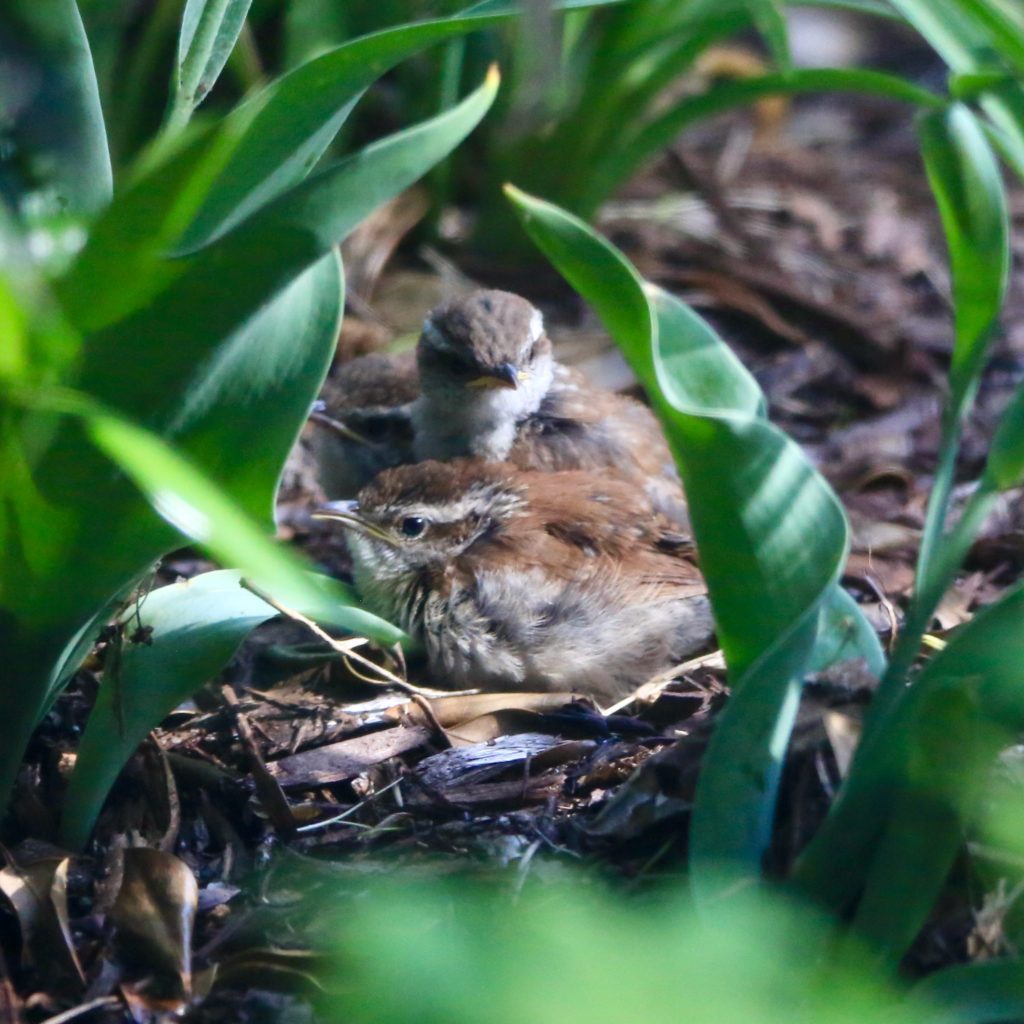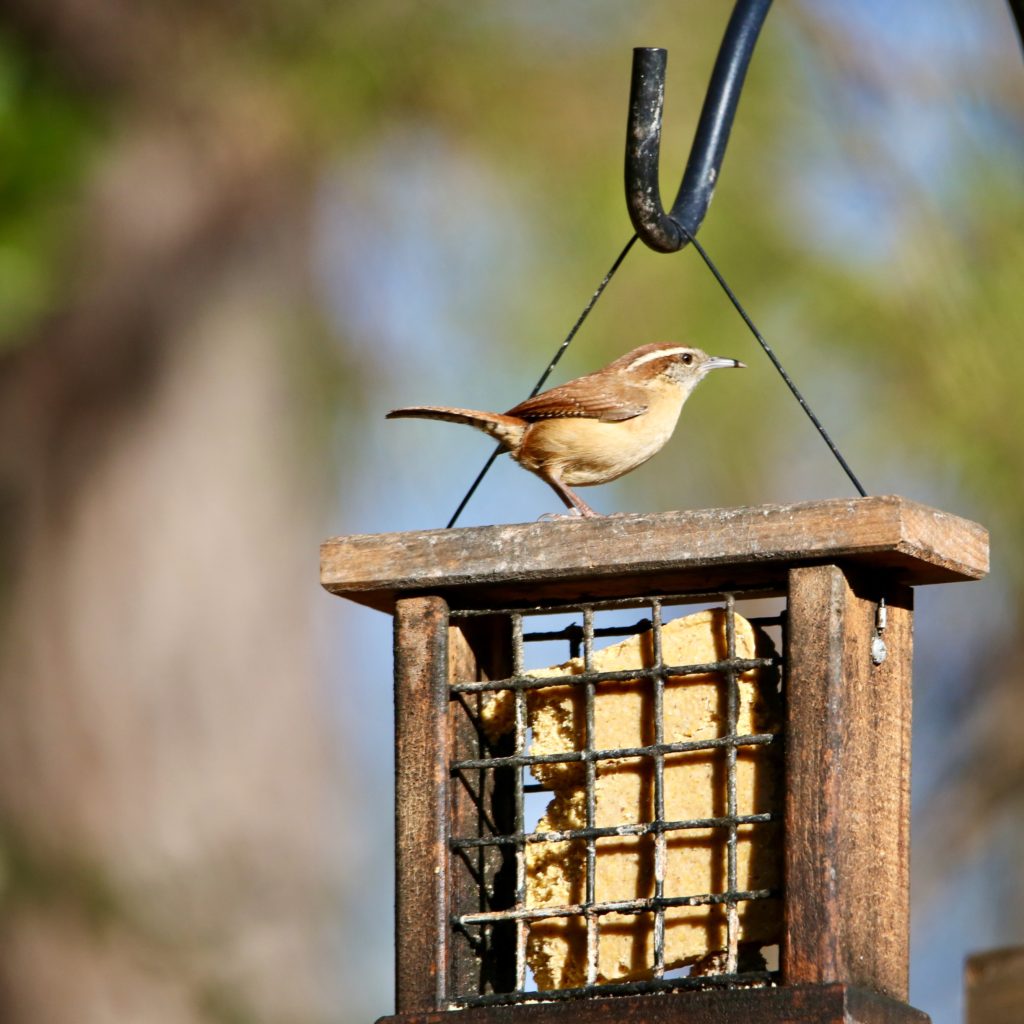
Carolina Wren
A Carolina Wren is a fun bird to see while bird watching. Below are some tips to help you identify Carolina Wrens. We have also put together a list of fun Carolina Wren t-shirts, Carolina Wren bird patches, bird houses, bird feeders, binoculars, stickers and other fun bird watching items.
About the Carolina Wren
Carolina Wrens (Thryothorus Ludovicianus) are small, enthusiastic insectivores that are more audible than they are visible. Especially during the summer, in every patch of woods you pass, you will hear the rolling song of the Carolina Wren. This shy bird is often out of sight but produces
the most pleasant teakettle-teakettle! song.
Carolina Wren Color Pattern
Both the male and female Carolina Wren have a bright unpatterned reddish-brown plumage on its back and a warm fluffy belly. Their eyebrows take the form of a long with strike matching its white chin and throat.
Description and Identification
These humbly-sized birds have a chunky rounded body, with a slim tail that extends long and upwards. They have large heads with short necks and a long, slender, and down-curved bill. Plumed with bright reddish-brown and buddy orange colors, these birds are almost smaller than sparrows and might fit between two human palms. Despite their size, these small birds have powerful vocals. Their cinnamon colored plumage and a sharp eyebrow stroke give them an austere appearance. They are, indeed, fierce scolders of anyone that intervenes in their territories. They can be spotted by listening for their teakettle!-teakettle! song
Carolina Wren Size
This small but chunky bird has a round body with a long tail that stays cocked upwards. Its distinctive long slender downward curved bill is what identifies it as a Wren.
The relative size for both sexes is:
- Length: 4.7-5.5 in (12-14 cm)
- Weight: 0.6-0.8 oz (18-22 g)
- Wingspan: 11.4 in (29 cm)
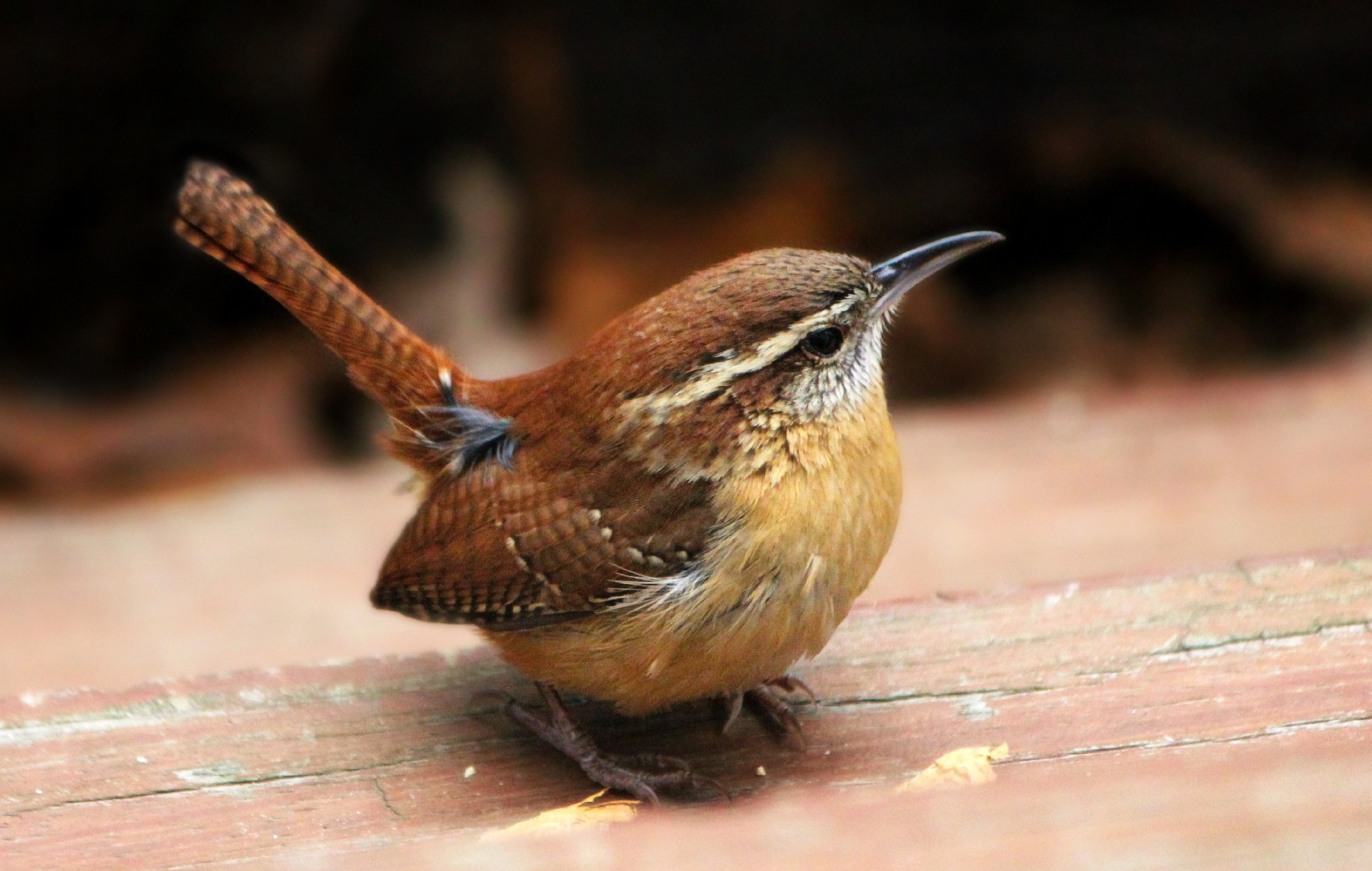
Carolina Wren Behavior
- Carolina Wren pairs often stick together minding their own business with their family groups.
- As it looks for food, the Carolina Wren cocks its tail upward, however, as it sings, it holds its tail down.
What Carolina Wren Eat and their Food
These little birds stay close to the ground when looking for food. They prefer to hop along on or close to the ground, scouting for insects, larvae, and spiders. Sometimes they also eat small lizards and tree frogs. Their diet also consists of fruits and berries. Birds in urban locations might also use bird feeders, looking for suets, peanuts, and other items. Younglings depend on adults for up to 15 days after hatching.
Their diet consists mostly of insects with only about five percent being seeds and vegetable matter. The primary insects are caterpillars, grasshoppers, and crickets. During the winter is when they mostly eat berries, small fruits, and seeds.
Where Carolina Wrens Live and Their Habitat
Carolina Wrens dwell on forestlands, swamps, farms, and tree-filled communities. They are commonly spotted in open woods and backyards in the southeast around brush piles, low tangles, barks of trunks, and sometimes on bird feeders in quiet areas. These birds love exploring tangles of vines. They can be found by following their birdsong through dense vegetation and forest ravines. During the breeding season, they might find shelter in nestling boxes with slits rather than holes. They might also make a nest in discarded flowerpots in quiet backyards.
These birds frequent dense vegetative habitats like lowland swamps, brushy thickets, and woods. They love to fly low through tangled underwood.
Range and Migration
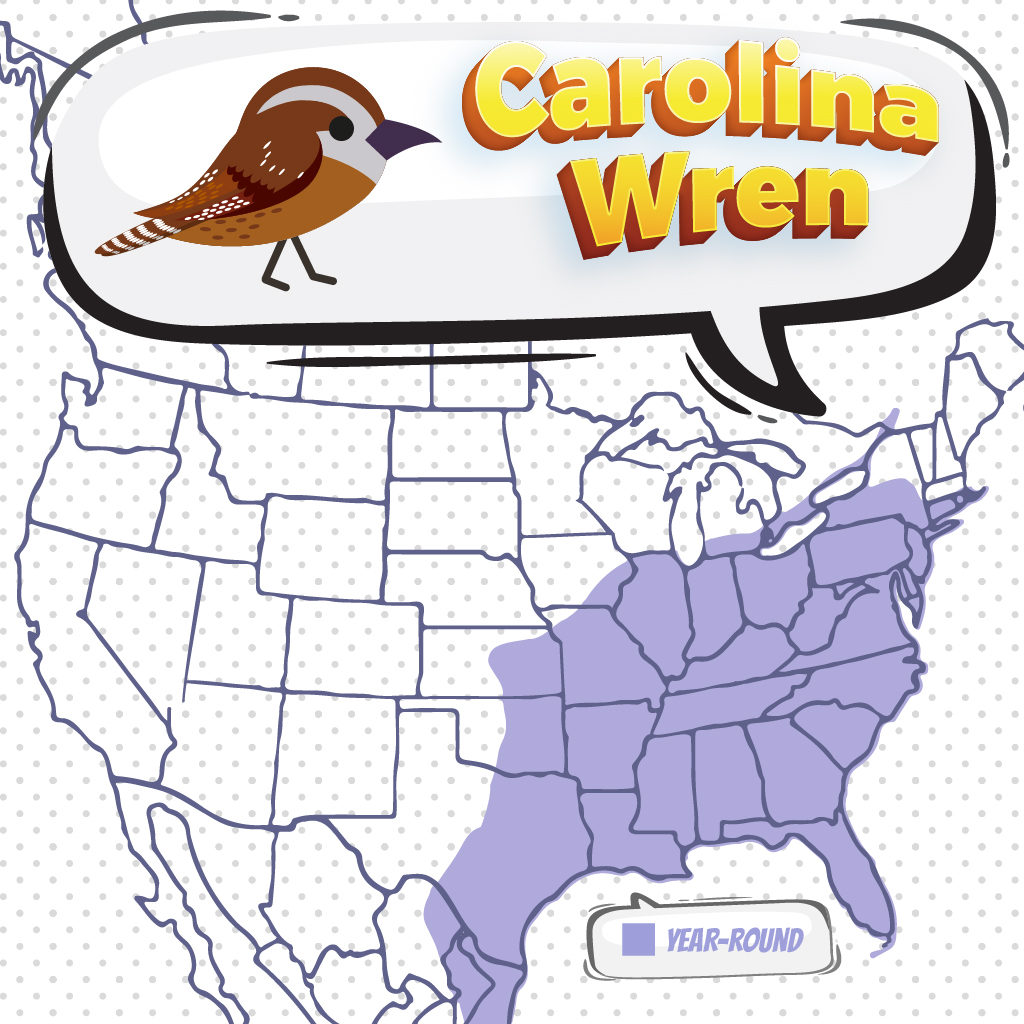
These brightly colored wrens struggle with cold harsh climates and are better found in southern regions of Northern America. They are the official state birds of South Carolina. As the global climates increase, their range has been increasing northward. They can be spotted as far north as The Great Lake. However, many northern birds are unable to survive the cold climates in the winter, leading to a dive in fringe populations. Found in pairs, these birds stay in their territories all year long, migrating only when they experience a persisted change in climate lasting years.
Nesting
Carolina Wrens are monogamous and mate for life. The male and female counterparts work together to build nests. These are naturally found in tree holes, branches and stumps, but can be located in urban areas in window sills and mailboxes. Their nests are built of twigs, leaves, and weeds, and are lined with a softer inner layer made with moss, grass, animal hair and feathers. Some nests also have pieces of snakeskin. Sometimes, their nests are dome-shaped, with an entrance on the side. While both males and females contribute to the building of the nest, the females are busier with making the inner lining.
Carolina Wren Lifecycle
Female Carolina Wrens lay 5-6 white eggs with brown blotches. Incubation is carried out by the female for 12-16 days. During this period the male feeds the female.
After the eggs have hatched, both the male and female parents feed and take care of their nestlings. The chicks are usually ready to leave the nest after 12-14 days after they are hatched.
Ornithology
Bird Watching Academy & Camp Subscription Boxes
At Bird Watching Academy & Camp we help kids, youth, and adults get excited and involved in bird watching. We have several monthly subscription boxes that you can subscribe to. Our monthly subscription boxes help kids, youth, and adults learn about birds, bird watching, and bird conservation.
Bird Watching Binoculars for Identifying Carolina Wrens
The most common types of bird watching binoculars for viewing Carolina Wrens are 8×21 binoculars and 10×42 binoculars. Bird Watching Academy & Camp sells really nice 8×21 binoculars and 10×42 binoculars. You can view and purchase them here.
Carolina Wren T-shirts
If you love the Carolina Wren you should purchase a Bird Watching Academy & Camp T-shirt. To help support bird conservation we donate 10 percent to bird conservation activities.
Carolina Wren Iron On Patches
Kids, Youth, and Adults love to collect our Bird Watching Academy & Camp iron on patches. Our bird watching patches help you keep track of the birds you have seen an identified. You can also display the patches on our Bird Watching Academy & Camp banners.
The Carolina Wren is a great iron on patch to start your collection with. The patches are durable and can be sewn on or ironed on to just about anything.
Carolina Wren Stickers
Stickers are a great way for you to display your love for bird watching and the Carolina Wren. We sell a monthly subscription sticker pack. The sticker packs have 12 bird stickers. These sticker packs will help your kids learn new birds every month.
Bird Feeders For Carolina Wren
There are many types of bird feeders. Here are our favorite bird feeders for your backyard. We use all of these bird feeders currently. Kids will have a great time watching birds eat at these bird feeders. Using this collection of bird feeders will provide a wide variety and many types of birds.
Best Bird Houses for Carolina Wren
There are many types of bird houses. Building a bird house is always fun but can be frustrating. These 4 bird houses have become our favorites. Getting a bird house for kids to watch birds grow is always fun. We spent a little extra money on these bird houses but they have been worth the higher price and look great.




